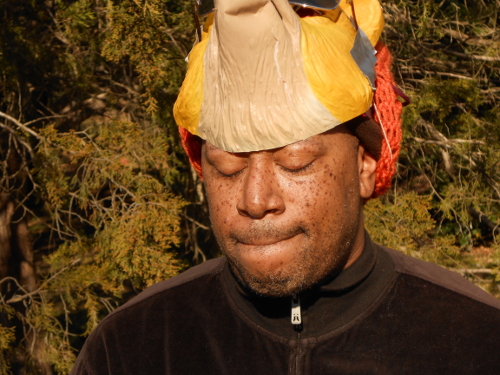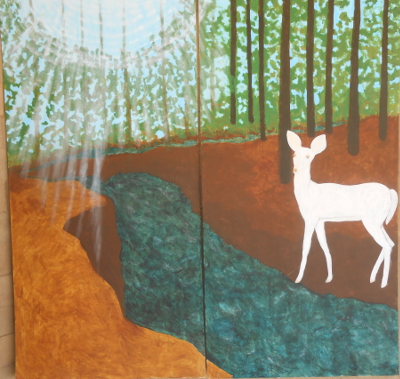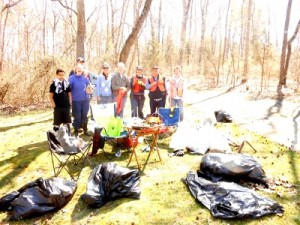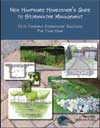This is an article I wrote for the February issue of the Parkwood Inside/Out. We are planning trash cleanups on March 28th and a hike, and will be participating in the costume parade downtown on March 21st and other events for Durham Creek Week 2015. Check this website for announcements and all events will also be posted at:
Creek Week Events
Parkwood’s elms are blooming
Red maples dotting the still bare landscape with blots of crimson are one of the first signs that spring is here, but elms are among the first trees to flower. These prominent trees might be less appreciated because an elm in flower is stormy grey or lime green. Winged elms are the most common species, especially in central Parkwood, but there are slippery elms along the streams and probably American elms, and there are scattered Eurasian ornamentals. The most prominent and beautiful elm I know of in the area is the classically fountain-shaped tree on Highway 54, across from . Because its limbs are all high above the ground, it is hard to identify the species.
Elms, especially American elms, are beloved for the fountain or vaselike shape of mature trees, and there is a graceful symmetry to elms generally. Their leaves and branches alternate, creating an airy lattice effect. The straight veins in their oval leaves, double toothed like a pruning saw, are straight and parallel, but elms also have a very unsymmetric feature – the leaf bases are lopsided, especially in American and slippery elms. Elms have thin, elegant branches, strengthened by very tough wood, and the bark of some species can be twisted into rope. They produce wind pollinated bisexual flowers in early spring, developing into small seeds with a circular flange that drift with the wind several weeks later. The elms generally like moist soil, but winged elms seem to grow in drier soil as well.
The massive, spreading elm in front of Carrboro’s Town Hall could be an American elm (it is big enough for a plaque, yet nothing identifies the species), and I think there are labelled American elms in the Coker Arboretum at UNC. American or white elms are around, but are less common after the arrival of Dutch Elm Disease, a fungus that came to the US around 1930, and is spread by introduced and native beetles that bore in elms. Many elms have been killed, especially American elms, but this seems to be a little less catastrophic than the introduction of chestnut blight and emerald ash borer beetles, and the disease can be managed. American elms are large trees with furrowed bark, brownish leaf buds, and their leaves and stems aren’t very hairy, or less so than slippery elms. Their seeds have some hairiness, while the seeds of slippery elms lack hairs. Both American and slippery elms have large, sandpaperlike leaves, but American elms have greenish flowers, unlike slippery elms. Because their wood is so strong and resistant to splitting, and grips screws tightly, American elms have been used to make things like sports equipment, boats, flooring, crates, and kitchen cutting blocks. Many were planted for landscaping in the northeast, though they grow throughout the eastern USA. In A Natural History of Trees, botanist and nature writer Donald Culross Peattie wrote “If you want to be recalled for something that you do, you will be well advised to do it under an [American] Elm – a great Elm, for such a tree outlives the generations of men; the burning issues of today are the ashes of tomorrow, but a noble Elm is a verity that does not change with time. And although Elms too are mortal, great ones are remembered as long after they are gone as are great men.”
Slippery elms are similar to American elms, but smaller and less vaselike. They have been called red elms, having hairy, reddish leaf buds and reddish flowers, as well as hairy twigs. Their inner bark is slippery and becomes mucouslike when chewed. This inner bark was used to make tea and flour and was used for a variety of internal and external problems and still has an FDA approved medical use. American elm bark was used medicinally by Native American groups.
Winged elms are named for the cork flanges that line their twigs to varying degrees. Sweetgums usually aren’t as winged as elms and their leaves are very different. Winged elms leaves are smaller, smoother, and more symmetrical than those of other elms, and large trees have light brown bark. I think these are the first elms to flower, with brownish flowers that turn into silvery, hairy seeds. As with most trees, winged elms grow a lot when they first leaf out in spring, delicately etched leaves surging forth from the twig tips at a fast clip. The tiny, silky looking new leaves hang as if limp, but are actually strangely stiff. Snow, ice, and maybe hurricanes smashed many of the spindly young loblollies behind the Fire Station around 2002, leaving winged elms, ash, and a few surviving pines as the dominant tall trees, to be replaced themselves by oaks, hickories, and beech in coming decades.
Many animals chew on elm branches, leaves, and seeds, including opossums, rabbits, and bobwhites. The caterpillars that fed on elms are like a who’s who of moths and butterflies, including many of the moths you might see at your porchlights this spring. Double-toothed prominent moth caterpillars feed only on elms. They bite into a leaf and then rest there, so their jagged backs appear like the missing leaf edge. It is surprising that this camouflage works, since elm leaves are emerald green, but the caterpillars are pale seafoam blue and green.







